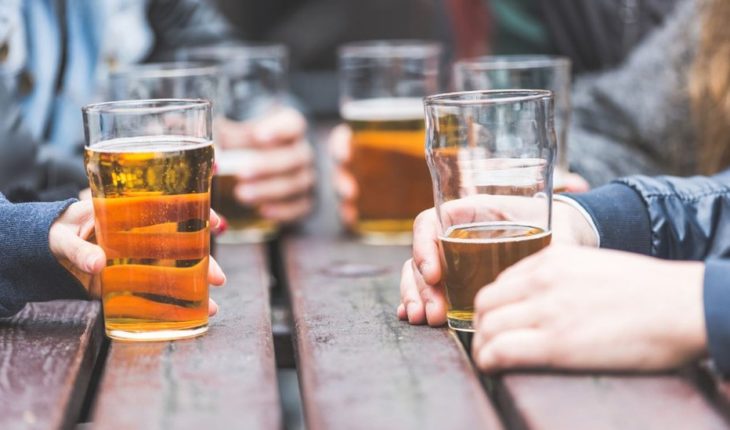Excessive alcohol intake was the cause of 5% of deaths globally, according to the World Health Organization’s (WHO) World Situation Report on Alcohol and Health.
Harmful alcohol use remains a relevant problem even though in recent years most deaths from substance abuse have been associated with illicit drug use, mainly opioids.
Read: Tobacco use drops in 16 years and marijuana in Mexico increases
In Mexico, the starting age for consumption of alcoholic beverages continues to decline. According to data from the National Survey of Drug, Alcohol and Tobacco Use (ENCODAT) 2016-2017, children are starting to drink alcohol from the age of ten. Consumption increased by 250% among women aged 12 to 17 during the period 2011-2016.
Despite this, internationally the country ranked 145th out of 190, with 2.3% of its population over the age of 15 with alcohol consumption problems, which puts it below the WHO global average (5.3%).
In 2015, according to data from the Centers for Disease Control and Prevention (CDC), an average daily of 6 people died of alcohol poisoning in the United States, equivalent to 2,200 deaths annually. Of this amount, 76% were for people between 34 and 65 years of age.
For 2016, the United States ranked 7th in the WHO World Rankings on Alcohol Consumption. Hungary ranked first and Saudi Arabia in last.
Alcohol intake is associated with other drugs such as cocaine. According to the United Nations Office on Drugs and Crime (UNODC), 0.3% of the world’s population had used cocaine by 2016. The United States and Mexico are among the 10 most consuming countries, ranking in positions 2 and 9 respectively of the countries that reported data.
In Mexico, the increase in cocaine use associated with alcohol has led to a public health problem.
In the period 2000-2010, the percentage of patients receiving care in specialized alcohol addiction facilities increased 188% from a rate of 7.6 patients to 21.9 per 100 thousand inhabitants. In the case of cocaine addiction, cocaine declined from 19% from 8.6 patients treated for cocaine addiction to 7 per 100 thousand inhabitants.
During 2018, both rates rebounded, alcoholism recorded 28.2 patients and cocaine rate reached 12.7 per 100 thousand inhabitants; which meant an increase of 271% and 47% respectively over the past 18 years.
Between 2000 and 2018 there was a high correlation (0.7) between alcohol and cocaine addiction, which means that an increase in alcohol use was accompanied by an increase in cocaine addicts.
During 2018 the behavior of these variables at the state level was similar.
The correlation was 0.95 (high association) which means that in the states with the highest rate of alcohol users there were also more addicted to cocaine, in almost the same proportion.
Mexico City was the entity with the highest rate of addicts to both substances, while Veracruz recorded the fewest cases.
According to rehabilitation centers, people who reported having problems with their alcohol consumption are in the population group with the highest academic degree. More than 60% had undergraduate and/or postgraduate studies.
In addition, 4.2% of road accidents in Mexico involved people who had consumed alcohol and in the case of fatal accidents (deaths) it was 6%.
He also highlighted the insurance of illicit drugs in the country, mostly in Quintana Roo, where elements of the Ministry of National Defense secured a ton of cocaine in the community of Tomas Garrido Canabal, valued in the market at 237 million 600 thousand Pesos.
From 2017 to 2018 there was an uptick in the consumption of both substances across the country.




![translated from Spanish: [VIDEO] Medical College denounces Carabinieri attack with tear gas at the point of press at the Santa Maria Clinic translated from Spanish: [VIDEO] Medical College denounces Carabinieri attack with tear gas at the point of press at the Santa Maria Clinic](https://ananoticias.com/wp-content/uploads/2019/11/translated-from-Spanish-VIDEO-Medical-College-denounces-Carabinieri-attack-with-370x215.jpg)
